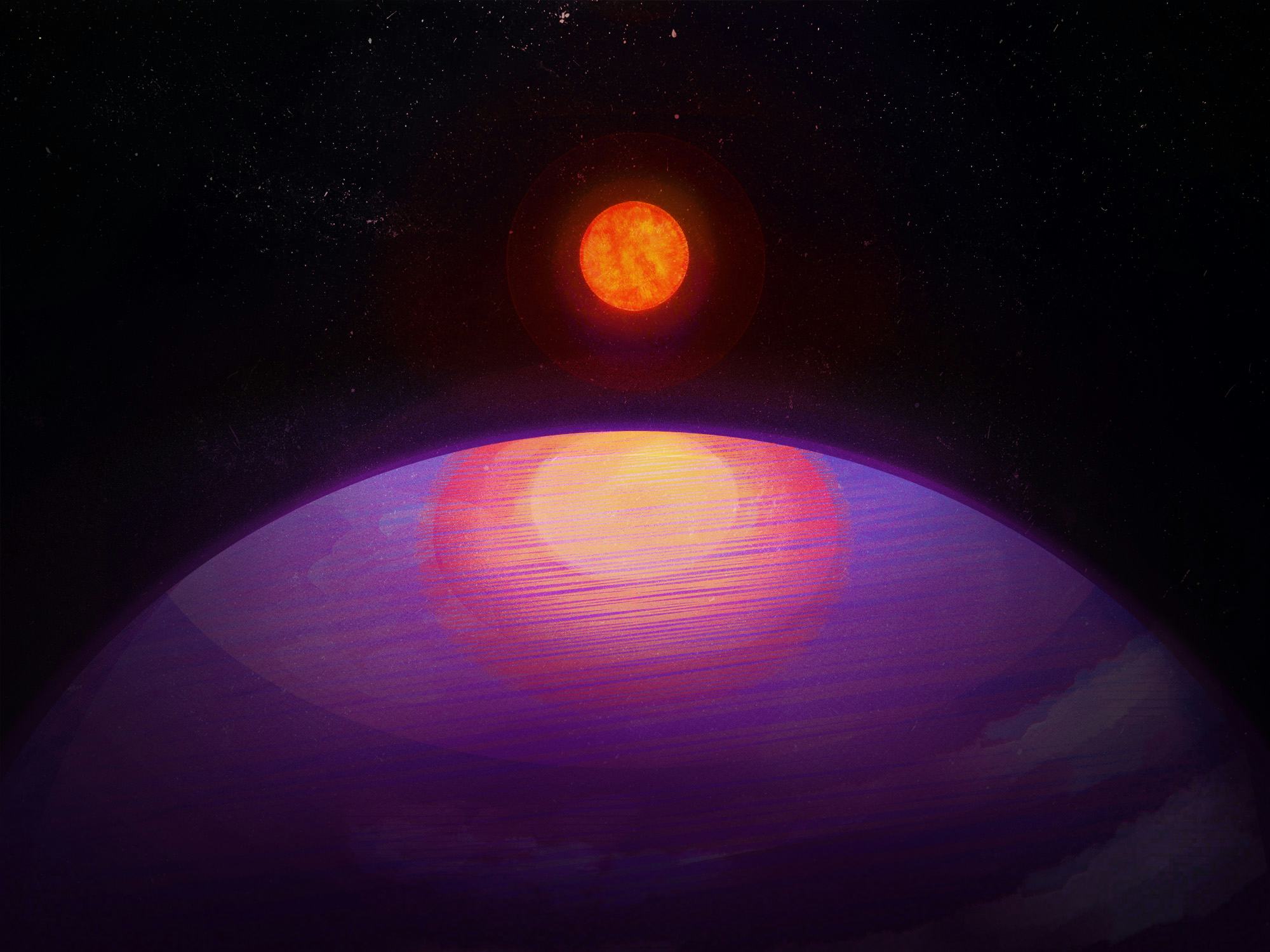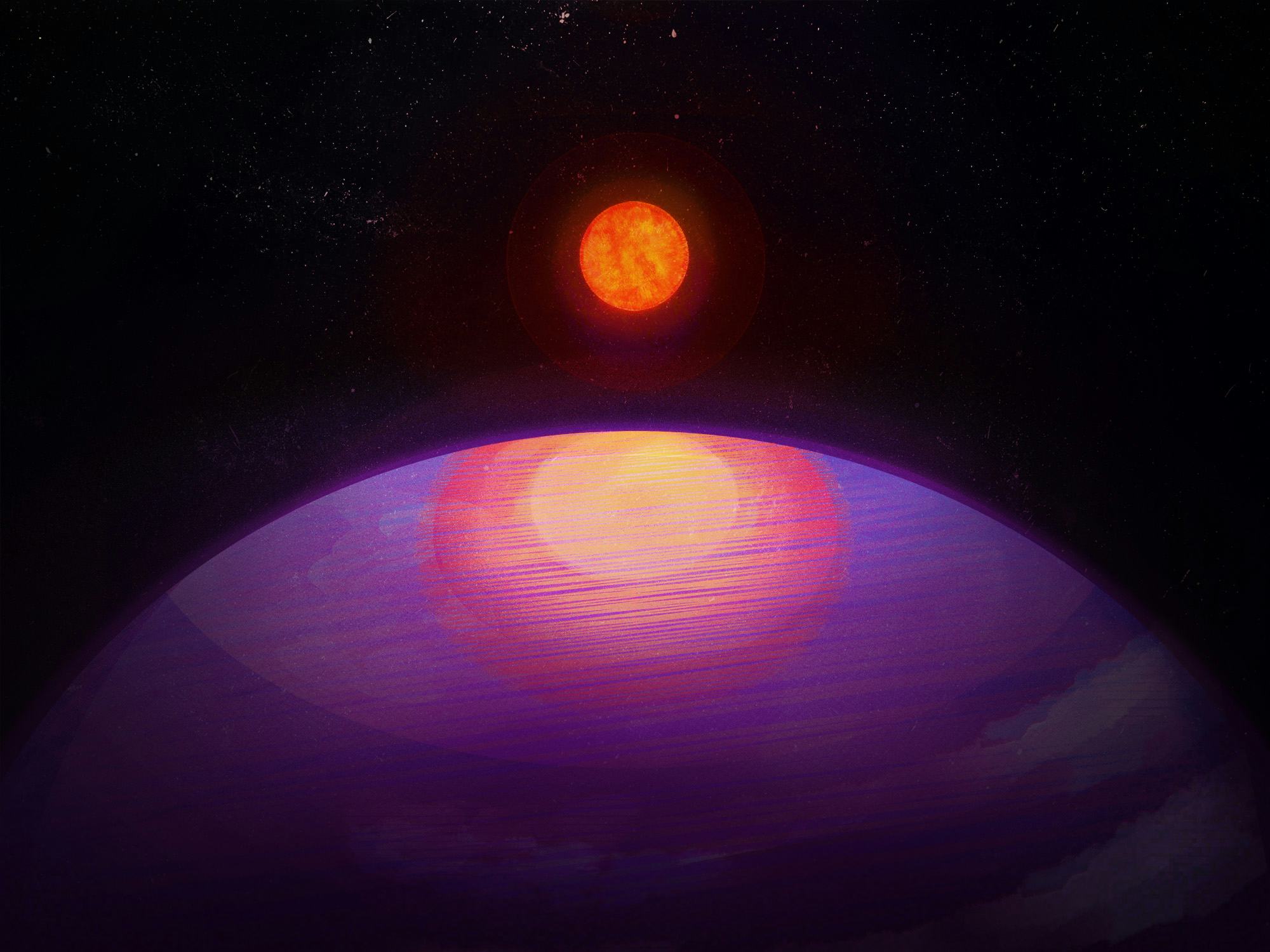
This tiny star has its own giant planet, and that may force astronomers to rethink how planets form around the universe’s smallest, and most common, stars.
Simulations of how star systems form predict that small stars like TRAPPIST-1 and LHS-3154 shouldn’t be able to pull together enough material around them to form giant planets like Neptune. But apparently nobody showed those simulations LHS-3154, a red dwarf star about 51 light years away. Princeton University astronomer Guðmundur Stefánsson and his colleagues recently spotted a planet nearly as massive as Neptune orbiting the tiny star.
The researchers published their findings in the journal Science.
A Planet Too Large for Its Star
Stefánsson and his colleagues found the planet thanks to a slight wobble in its host star.
We think of planets orbiting around their stars, but in reality, a planet and its star orbit a common center of gravity — which just happens to be really close to the middle of the star, since the star has most of the mass in the relationship. The planet makes whole loops around the star, while the star just seems to wobble a little bit. By looking for the wobbles — and measuring their size and timing — astronomers can measure a planet’s orbit and its mass.
This particular planet, dubbed LHS-3154b, turned out to be about thirteen times more massive than Earth, or almost as hefty as Neptune. And that’s a bit of a problem for planetary scientists.

Impossible Planet? Challenge Accepted
LHS-3154 is a tiny, tiny star, about a tenth as massive as our Sun, so it should have a relatively small planetary system. The gravity of a newborn star tends to pull material toward it: gas, dust, and ice. Most of that material settles into a swirling disk, called a protoplanetary disk, around the star. The dust in that disk will eventually form the cores of planets, from little rocky ones to tremendous gas giants.
Astronomers have a decent idea of how much dust up-and-coming young red dwarf stars have to work with because they’ve spied on several newly forming planetary systems with various infrared and radio telescopes. And the amount of dust that’s visible in those systems is about what most models predict a tiny star should be able to scrape together from nearby nebulae — and much, much less than you’d need to lay the foundation for a cosmic chonk almost the size of Neptune.
Stefánsson and his colleagues simulated the early life of a star system built around a star the size of LHS-3154, with about the amount of dust astronomers usually see orbiting similar stars. They ran the simulations hundreds of times, trying different densities and chemical mixtures for the dust. And in all those simulated versions of planet formation, LHS-3154 never managed to make a planet more than 10 times Earth’s mass in its inner solar system.
According to Stefánsson and his colleagues, “the amount of dust in the protoplanetary disk that formed the planet would need to be at least 10 times greater than is typically observed in the protoplanetary disks surrounding low-mass stars.”
Somehow, scrappy little LHS-3154 pulled it off, though, and it’s not the only star of its type to do so.

Clearly, We’ve Been Missing Something
Stefánsson and his colleagues’ simulations seem to suggest that either LHS-3154 was extraordinary, or that we’ve underestimated how much dust is really hanging around newborn red dwarf stars.
Masset, who wrote a short paper commenting on Stefánsson and his colleagues’ recent study, leans toward the latter explanation. “The masses of solids inferred from observations of protoplanetary disks are rarely sufficient to produce known planetary systems,” he writes.
There are several ways red dwarf stars could be hoarding more dust than we see. One is that planets may start growing much earlier than we expect. If enough dust clumps together into at least centimeter-sized pebbles, it becomes harder for long-wavelength telescopes to see, according to Stefánsson and his colleagues. And Masset points out that if whole planets form early on, astronomers would be left looking at “the leftovers of planetary formation.”
If that process starts early enough, within the first million years after the host star flares to life, then those early-bird protoplanets would have a relatively well-stocked protoplanetary disk all to themselves. “This would enable runaway accretion of gases and thereby the formation of a gas giant planet,” write Stefánsson and his colleagues.
In the end, as always, astronomers like Stefánsson and his colleagues will need more data — from planetary systems around red dwarfs and from newly forming systems still shrouded in gas and dust — to solve the mystery. Meanwhile, LHS-3154 b appears unbothered.







